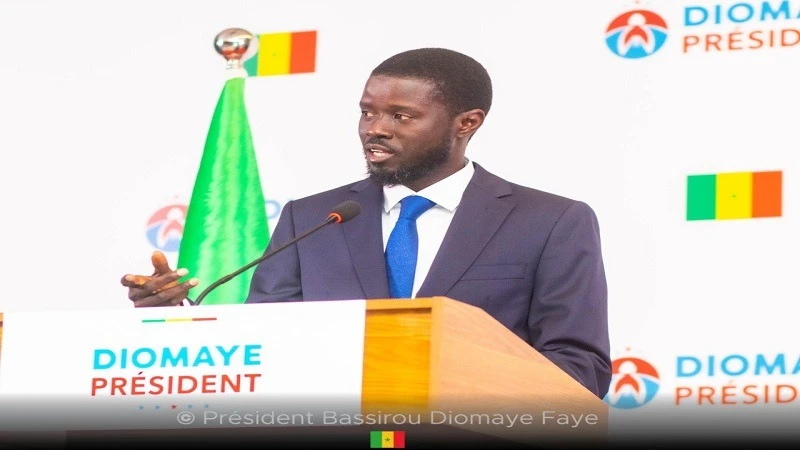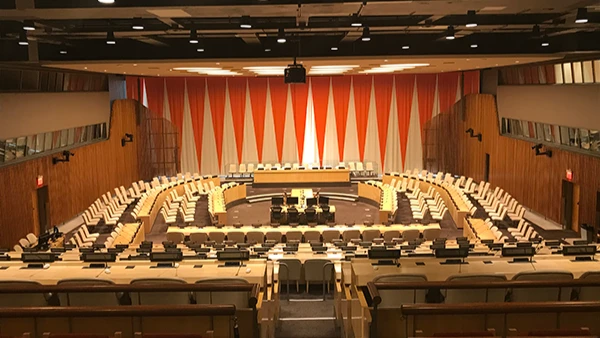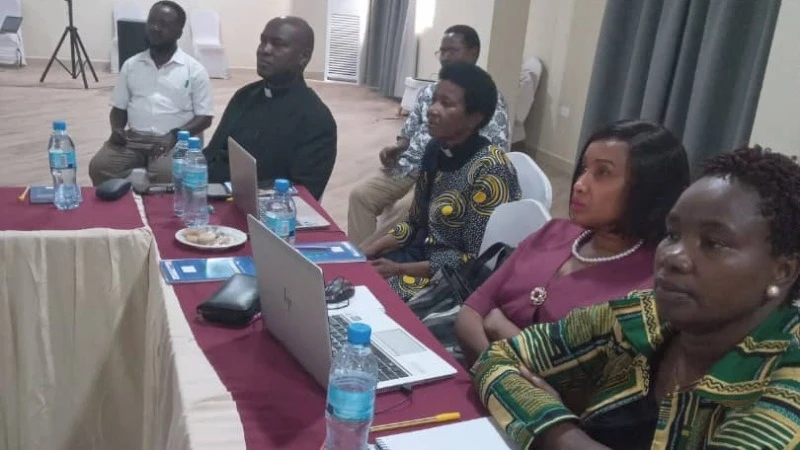When anti-poverty grant fail to end rural poverty-2

In yesterday’s issue we saw how Athumani Mkalule (65) resident of Chale village in Kisarawe District, Coast Region, is still struggling with poverty two decades since he became a TASAF beneficiary, excerpts.
Edmund Livinda, TASAF Project Coordinator, Kisarawe District Council responded to the writer of this piece that it is not TASAF’s responsibility to mobilise funds for beneficiary groups for them to establish income generating activities.
He said grants extended through TASAF are enough for serious beneficiaries to establish savings and lending groups hence run sustainable income generating activities of their own choice.
Livinda said that beneficiaries are trained on financial discipline; business plan and project proposals drafting so that they are capable of seeking investment loans from financial institutions.
The training is conducted prior to grants disbursements. He said that beneficiaries perceive TASAF grants in different ways with some of them spending the money on non-economic activities.
He said the Fund is operating under a Laissez-faire policy. “We cannot dictate how beneficiaries should spend their grants. A few beneficiaries who are yet to transforming their livelihoods through TASAF grants lack commitment, courage and trust among themselves;
There are several beneficiaries who have decided to form saving and lending groups and are living a successful life. One of these groups is Jipe Moyo, found in Kitanga village,” said Livinda.
Livinda emphasized that the main priority of TASAF grants is to harmonise extreme poverty by facilitating people to manage daily household needs.
He said public work programmes (PWP) are intended to complement the grants so that committed beneficiaries can earn more than others.
“Beneficiaries are not forced to work in public work programmes. Those who feel like they are not paid something they deserve are free to quit and continue as beneficiaries of monthly grants,” said Livinda.
He dismissed complaints that TASAF grants are selective whereby the needy are left out and in some cases the grants benefit people from the middle income families.
Chris Rwezahula, TASAF Project Accountant, Kisarawe District Council, said that 77 villages are targeted with the project but so far 49 villages have been reached.
According to him, the 49 covered villages had registered 3,005 beneficiaries at the end of June 2023.
The plan is to extend the project to cover the remaining 28 villages in the coming financial years.
“Between May and June last year we have paid a sum of 211mn/- to all beneficiaries. Almost 65 percent of the payments were allocated to beneficiaries who took part in public works programmes,” said Rwezahula.
As for the 65 percent of 211mn/- disbursement it means that people who took part in the public work programme were paid a total wage amounting 137.15mn/- while the remaining 73.85mn/- was the two months beneficiaries’ grant.
He said that beneficiaries’ work 60 days in six months which is equivalent to ten days a month.
Beneficiaries have to graduate after five years but some of them, especially men, have been filing requests asking to continue receiving the grants since they don’t have relatives or income generating activities to rely on.
“The graduation age for being a TASAF beneficiary is 65 years. I don’t have exact figures but the majority of them have been asking to continue benefiting from the grants;
For one to graduate we have to conduct an analysis if he or she is capable of living their lives independently from the project,” said Rwezahula.
He asserted that in the Coast region all nine district councils known as project areas of authority (PAA) are covered by TASAF projects.
Rwezahula named the PAA as Kisarawe District Council, Chalinze District Council, Kibaha District Council, Kibaha Town Council, Bagamoyo District Council, Mkuranga District Council, Mafia District Council, Kibiti District Council and Rufiji District Council.
Beatrice Dominic, Kisarawe District Council Executive Director, said that in the district there are several TASAF beneficiary savings and lending groups.
She said that beneficiaries have to form groups and establish income generating activities.
She asserted that the grants are issued to individual beneficiaries and not savings and lending groups.
“We could have intervened by linking these groups to credit lenders but we have learned our lesson from the beneficiaries of the 10 percent district council’s loans;
The majority of such beneficiary groups are not loyal in repaying their loans. It has turned into a headache for us,” said Dominic.
If that is the case, she questioned, who knows if the TASAF beneficiary groups who demand linkage to financial institutions will repay the loans.
Juma Mfaume (49) Kidugalo hamlet resident commended the government for coming up with the TASAF project that has been supporting people from poor households with grants to survive.
“It’s just six years since I became a TASAF beneficiary. I have two children. I’m paid 30,000/- in a two months period as a children’s monthly grant. I’m often paid 90,000/- as wage for participating in public work programmes,” said Mfaume.
According to him, he has managed to send his two children to school, build a three room mud house, even purchase a one kilowatt solar panel and he enjoys electricity consumption since the village is yet to be reached by the rural electrification project.
Mfaume revealed that he doesn’t only rely on TASAF grants but also works as a coconut tree climber and on other villagers’ farms. He earns 1,500/- from climbing one coconut tree.
He usually climbs one coconut tree a day but on lucky days he climbs up to three trees and earns 4,500/-. However, he earns between 3,000/- and 7,000/- by working on other villagers’ farms.
This is the case when TASAF has during the third quarter of financial year 2022/23 reached only 467 beneficiary households through the livelihood productive grants (LPG) of the targeted 50,000 households intended to be reached with the grants in the whole financial year that ended on June 30, 2023.
According to the third quarter implementation progress report of the Fund’s second productive social safety net (PSSN II) program, TASAF had set a target of reaching 25,000 beneficiary household through LPG from the old eight project area of authorities (PAAs) and another 25,000 beneficiary households from the Impact Evaluation Project Area of Authorities (IE-PAAs).
“The programme also targeted at reaching three new PAAs. Beneficiaries have continued to receive mentorship and coaching as well as training to ensure that the grants are used according to their business plans,” reads part of the report.
According to the report, one of the major challenges that face the program implementation is beneficiaries’ fear of being left out from the program and the fear of what life will be like after they have been exited from the program.
The report states that beneficiaries’ fears lead some households to provide incorrect information about their improvements in terms of TASAF selected welfare indicators.
“Mitigation measures by the Fund have been conducting continuous awareness sessions on the need for beneficiaries to engage in productive activities that will increase their income even after their departure from the programme,” states the report.
During the third quarter under review (January to March 2023), the report states that financiers have committed a total amount equivalent to $678,402,654.32 (1.706trillion/-) for PSSN II activities out of the program total budget of $883,310,000 (2.222trillion/-) leaving a financing gap of $204,907,345.68 (516.10billion/-).
The financing gap has been reduced by $6,130,000 (15.414billion/-) after receiving a new commitment from the British Embassy (FCDO). Out of the committed amount, $486,963,394.59 (1.225trillion/-) was absorbed by the end of the reporting period.
This is the case when only one and a half year has remained until the accomplishment of the implementation of the National Development Vision 2025 that targets at reducing abject poverty by a half.
The vision 2025 aims at achieving a high quality livelihood for the people by developing a strong competitive economy among other targets.
A quality livelihood for all Tanzanians is expected to be attained through strategies which ensure the realization of several goals that includes:
Food self-sufficiency and security; achieving gender equality, the empowerment of women in all socio-economic and political relations and culture and absence of abject poverty.
Presenting TASAF programme implementation report for 2022 in Dodoma on November 30, 2023, George Simbachawene, the Public Service Management and Good Governance state minister in the President’s Office, said daily spending by most of the beneficiaries is still below the poverty line benchmark.
He said the poverty alleviation programme report shows that average daily spending for targeted TASAF households in 2022 stood at 1,149/-, well below the poverty line of 1,859/- for Mainland Tanzania.
According to him, the findings shows the average spending for a single household per month was 152,621/- in which food took the most share with 113,256/- equivalent to 74.2 percent of household spending.
“The monthly spending for targeted households is down compared to monthly household spending in the mainland,” he affirmed, noting that most households spend the money given to them through the programme on food instead of investing in income generating activities.
He said the government’s focus is to sensitize beneficiaries so that they invest the grants in income generating activities, pointing out that 50 percent of the targeted families are involved in farming, 22 percent in paid activity and 15 percent are self-employed.
Simbachawene said upwards of 57 percent of food consumed in beneficiary households is home-grown or given as gifts from relatives while 43 percent of the food is purchased.
“I would like to encourage the beneficiaries of the TASAF programme to ensure that they produce food by capitalizing on opportunities created by the government or other stakeholders where they live,” he appealed.
On December 9th, 2023 the Minister of State in the President’s Office, Planning and Investment, Prof Kitila Mkumbo said that a research report on the analysis of the implementation of the National Development Vision 2025 has outlined achievements realized so far towards poverty alleviation and suggests the areas of improvement on the way forward.
He said that since the Vision’s commencement in 2000, gross domestic product -GDP per capital income of an individual has grown to $1,200 an equivalent of 2,880,000/- in 2022 up from $399.5 an equivalent of 322,597/- in the year 2000.
“Tanzania has also achieved 124 percent in food security compared to the target goal of 140 percent by 2025. The achievement complements the government’s capability in fighting hunger across the 184 country’s district councils,” said Prof Mkumbo.
The situation on the ground triggers doubts in line with Article 8-(1) (b) of the Constitution of the United Republic of Tanzania 1977 that states: “The primary objective of the government shall be setting economic policies that contribute to harmonizing and easing the welfare of the people.”
FinScope Tanzania 2023 Findings by the Financial Sector Deepening Trust (FSDT) states that about 44 percent of Tanzanians generate personal income through trading seasonal agriculture produce harvests.
FinScope shows that 35 percent of Tanzanians generate their income from casual labour or occasional jobs; eight percent generate income from monthly salaries or wages and five percent generate income by providing services usually on daily or weekly basis.
Top Headlines
© 2024 IPPMEDIA.COM. ALL RIGHTS RESERVED

























